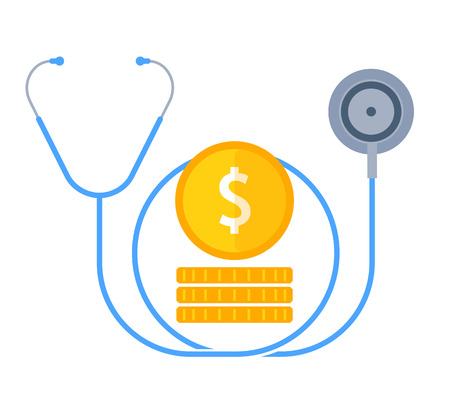Introduction to Roth Conversions and Retirement Income Planning
Imagine sitting at your kitchen table, surrounded by a stack of retirement account statements, a calculator, and a mug of coffee that’s gone cold. This was the scene for Susan, a 58-year-old nurse from Ohio, who had spent decades diligently contributing to her 401(k) and Traditional IRA. Now, with retirement on the horizon, she faced the daunting question: how could she make the most of her hard-earned savings while keeping taxes in check? Like many Americans, Susan realized that simply saving wasn’t enough—she needed a strategy to turn those savings into efficient income during retirement. That’s where Roth conversions come into play. A Roth conversion allows you to move money from a pre-tax retirement account, like a Traditional IRA or 401(k), into a Roth IRA. While you’ll pay taxes on the converted amount now, your future withdrawals from the Roth IRA will be tax-free. This powerful financial tool can help retirees maximize flexibility and reduce long-term tax burdens, especially as they navigate the complex world of required minimum distributions (RMDs) and fluctuating income needs. In this article, we’ll explore how utilizing Roth conversions can improve your retirement income efficiency—helping you not just retire comfortably, but retire smart.
Understanding Tax Implications: Pre-Tax vs. Roth Accounts
When planning for retirement, understanding the difference between pre-tax and Roth accounts is a game-changer for your long-term financial freedom. Think of it like choosing between paying for an all-you-can-eat buffet now or paying after youve eaten, but at a higher rate if you end up hungrier than expected. Pre-tax accounts—like traditional 401(k)s and IRAs—let you contribute money before taxes are taken out, lowering your taxable income today. However, Uncle Sam will come knocking when you withdraw funds in retirement, taxing both your contributions and their growth as ordinary income.
On the other hand, Roth accounts flip the script. You pay taxes on your money before you contribute, so withdrawals—including earnings—are tax-free in retirement if certain conditions are met. Its like buying a ticket to that buffet upfront; once inside, everything’s yours without an extra bill at the end. For many Americans, this decision comes down to whether they expect their tax rate to be higher or lower in retirement. Here’s a side-by-side comparison to help clarify:
| Pre-Tax (Traditional 401(k)/IRA) | Roth (Roth 401(k)/IRA) | |
|---|---|---|
| Taxation on Contributions | No (tax deduction now) | Yes (taxed now) |
| Taxation on Withdrawals | Yes (taxed as ordinary income) | No (tax-free if qualified) |
| Best For | Higher-income years (lower bracket expected in retirement) | Younger savers, or expecting higher taxes later |
Let’s say Jane, a teacher from Ohio, contributes $5,000 annually to her traditional IRA during her working years when she’s in the 24% tax bracket. She saves $1,200 each year in taxes today. But when she retires and starts withdrawing at a similar or higher tax rate, she might pay more in total taxes over time—especially if her investments grow substantially.
Now consider Tom, who opts for a Roth IRA instead. He pays $1,200 more in taxes upfront but enjoys completely tax-free withdrawals later—even if his investments double or triple over decades. The key takeaway? Pre-tax accounts give instant gratification via tax savings now, while Roth accounts provide long-term peace of mind with future tax-free growth.

3. The Power of Roth Conversions: How and When to Convert
Understanding the timing and strategy behind Roth conversions is key to maximizing retirement income efficiency. Not every year or situation is ideal for a conversion, but when done thoughtfully, it can be a game changer for your future tax-free income. Let’s explore real-life scenarios and practical stories that highlight when Roth conversions make the most sense.
Seizing Low-Income Years for Smart Conversions
Meet Sarah, a tech professional from Austin, Texas. In her early 50s, she decided to take a career break to care for her aging parents. With her taxable income significantly reduced that year, Sarah saw an opportunity: convert a portion of her traditional IRA to a Roth IRA while in a lower tax bracket. She paid less tax on the conversion, and her investments now grow tax-free for the rest of her life. By acting during this “income valley,” Sarah set herself up for greater flexibility and fewer required minimum distributions (RMDs) down the road.
Taking Advantage of Market Downturns
Then there’s Mike and Linda, a retired couple in Colorado. During the 2020 market dip, their investment portfolio temporarily dropped in value. Instead of panicking, they viewed this as a golden opportunity—they converted some of their traditional IRA assets to a Roth IRA while values were low. As the market recovered, those newly converted Roth assets grew tax-free, maximizing their future withdrawals without increasing their current tax bill too much. This move turned a challenging moment into a long-term financial win.
Why Timing Matters
The decision of when and how much to convert is highly personal. For individuals with variable income—like freelancers or those between jobs—lean years are prime opportunities for partial Roth conversions. Similarly, recent retirees often find themselves in lower brackets before Social Security or pension benefits kick in; these “gap years” are ideal for strategic conversions.
Lessons from Real Experiences
These stories show that with careful planning and an eye on your tax picture, you can use Roth conversions to your advantage. Whether you’re navigating a temporary income drop, responding to market volatility, or simply planning ahead in retirement, leveraging these windows can lead to more efficient—and potentially higher—tax-free income later in life.
Retirement Income Optimization with Roth Accounts
When it comes to maximizing retirement income, having the right withdrawal strategy can make a substantial difference in how much you keep after taxes. A key tool for this is the Roth conversion ladder, which not only provides flexibility but also helps create a steady and reliable cash flow throughout your retirement years.
Understanding Withdrawal Order and Tax Efficiency
Most retirees have multiple types of accounts—Traditional IRAs/401(k)s, Roth IRAs, and taxable brokerage accounts. The sequence in which you withdraw funds matters due to tax implications. Generally, the recommended order is to first use taxable accounts, then tax-deferred (Traditional IRA/401(k)), and finally tax-free (Roth IRA). But Roth conversion ladders can strategically disrupt this sequence for greater efficiency.
The Roth Conversion Ladder Strategy
A Roth conversion ladder involves gradually converting portions of your Traditional IRA or 401(k) into a Roth IRA over several years, typically starting after you stop working but before you reach age 73 (when Required Minimum Distributions begin). Each converted amount must stay in the Roth IRA for at least five years before being withdrawn tax-free. By planning these conversions, you can fill up lower tax brackets and avoid large lump-sum conversions that might push you into a higher bracket.
| Year | Amount Converted | Tax Rate Applied | Withdrawal Available (5 Years Later) |
|---|---|---|---|
| 2024 | $20,000 | 12% | 2029 |
| 2025 | $20,000 | 12% | 2030 |
| 2026 | $20,000 | 15% | 2031 |
| 2027 | $20,000 | 15% | 2032 |
| 2028 | $20,000 | 15% | 2033 |
Benefits of a Roth Conversion Ladder for Steady Cash Flow
This approach creates a pipeline of penalty-free Roth withdrawals each year once the five-year period has passed. It allows you to supplement Social Security or pension income without increasing your taxable income during retirement. Since Roth IRA withdrawals don’t count toward Adjusted Gross Income (AGI), they don’t affect Medicare premiums or the taxation of Social Security benefits. This strategic layering gives you flexibility to respond to changing expenses or unexpected needs while protecting your long-term financial health.
5. Common Pitfalls and Best Practices
While Roth conversions can be a powerful tool for maximizing retirement income efficiency, many Americans stumble along the way due to some common missteps. Understanding these pitfalls—and how to sidestep them—can make all the difference in achieving true financial freedom.
Avoiding Unwanted Tax Surprises
One of the biggest mistakes is underestimating the tax impact of a Roth conversion. Since converted amounts are treated as taxable income, you could unintentionally bump yourself into a higher tax bracket or trigger additional taxes, like Medicare IRMAA surcharges. Its crucial to model your projected income and taxes before converting. Consider spreading conversions over several years to keep your annual taxable income within manageable limits.
Tip: Use Tax Software or Consult a Pro
Don’t guess your tax bill! Leverage reputable tax software or work with a CPA specializing in retirement planning. They can help you map out a multi-year conversion strategy that minimizes unnecessary taxes and keeps you compliant with IRS rules.
Timing and Sequencing Conversions
Many folks overlook the timing of their Roth conversions. Ideally, aim for years when your income dips—for example, after retirement but before taking Social Security or required minimum distributions (RMDs). This window often presents unique opportunities to convert at lower tax rates, improving long-term efficiency.
Tip: Watch Out for “Phantom Income”
If you’re not careful, capital gains, bonuses, or other sources of unexpected income can combine with your Roth conversion to create a much larger tax bill than expected. Keep an eye on all sources of taxable income when planning your moves.
Beneficiary Considerations
Another overlooked aspect is how Roth conversions impact heirs. While Roth IRAs aren’t subject to RMDs during your lifetime, your beneficiaries will need to follow distribution rules. Naming the right beneficiaries and understanding the implications can help pass on more wealth tax-efficiently.
Best Practice: Revisit Your Plan Annually
Your life circumstances and tax laws can change rapidly. Make it a habit to review your Roth conversion plan every year so you can adapt and stay on track toward retirement income efficiency.
6. Take Action: Is a Roth Conversion Right for You?
Now that you understand the potential of Roth conversions to boost your retirement income efficiency, it’s time to translate knowledge into action. Making this decision isn’t just about crunching numbers—it’s about aligning your financial moves with your long-term dreams. Here’s how you can start evaluating if a Roth conversion fits your journey toward financial freedom.
Reflect on Your Retirement Vision
First, consider what you want your retirement to look like. Do you plan to travel, downsize, or perhaps start a new passion project? Understanding your future lifestyle helps clarify how much flexibility and tax efficiency you’ll need in retirement income.
Assess Your Current Financial Situation
Take an honest inventory of your savings, current tax bracket, expected retirement expenses, and other sources of income. Think about how much you have in traditional IRAs or 401(k)s versus Roth accounts. This snapshot is essential for making informed decisions.
Run the Numbers—But Don’t Go It Alone
Use online calculators or work with a tax professional to model different scenarios. Evaluate how converting some or all of your traditional IRA funds could affect your taxes today versus in retirement. Remember, while DIY tools are helpful, personalized advice from a qualified financial advisor can help you avoid pitfalls and maximize benefits.
Consider Timing and Tax Implications
The timing of a Roth conversion matters. Converting during lower-income years or market downturns could minimize the tax hit. Weigh short-term tax costs against long-term advantages like tax-free growth and withdrawals.
Create an Action Plan
If a Roth conversion makes sense for you, map out a strategy. Decide how much to convert each year and set calendar reminders to review your plan annually as tax laws and personal circumstances evolve.
Empower Yourself for Financial Freedom
Your path to retirement is uniquely yours—don’t settle for one-size-fits-all solutions. By taking proactive steps and seeking advice tailored to your goals, you’re not just planning for retirement—you’re designing a future where your money works harder for you. Start exploring today whether a Roth conversion could be the key to unlocking greater income efficiency in your golden years.


